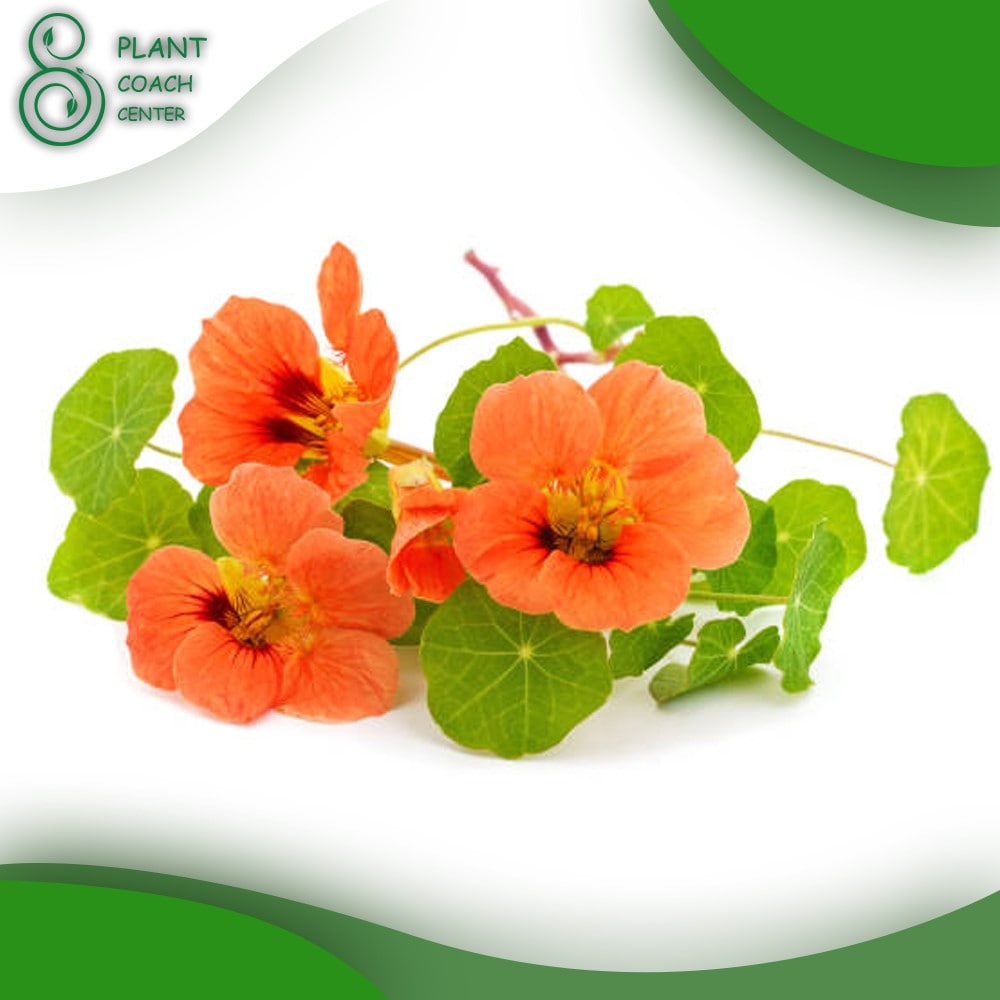When to Plant Nasturtiums
Nasturtiums, with their vibrant blossoms and fast growth, bring life and color to any garden. The key to a thriving nasturtium garden lies in knowing when to plant nasturtiums. This article, brought to you by plantcoachcenter.com, will provide a comprehensive guide to help you master the art of nasturtium planting.

What are Nasturtiums?
Nasturtiums are a genus of flowering plants belonging to the family Tropaeolaceae. They are native to South America but have been widely cultivated and naturalized in many parts of the world. Nasturtiums are known for their vibrant flowers and rounded, lily pad-like leaves. They are popular among gardeners for their easy cultivation, vibrant colors, and edible flowers.
Why Choose Nasturtiums?
There are several reasons to choose nasturtiums for your garden:
Easy to grow: Nasturtiums are known for their easy cultivation. They are hardy plants that can tolerate various growing conditions and are suitable for both novice and experienced gardeners.
Edible flowers and leaves: Nasturtium flowers and young leaves are edible and have a slightly peppery flavor. They can be used in salads, garnishes, or even as a colorful addition to dishes. The flowers are rich in vitamin C and have potential health benefits.
Attractive flowers: Nasturtiums produce vibrant, showy flowers in shades of red, orange, yellow, and occasionally other colors. They add a splash of color to gardens, containers, or hanging baskets.
Versatile uses: Nasturtiums can be grown in various settings, including gardens, containers, hanging baskets, or even as a cover for trellises or fences. They adapt well to different growing conditions.
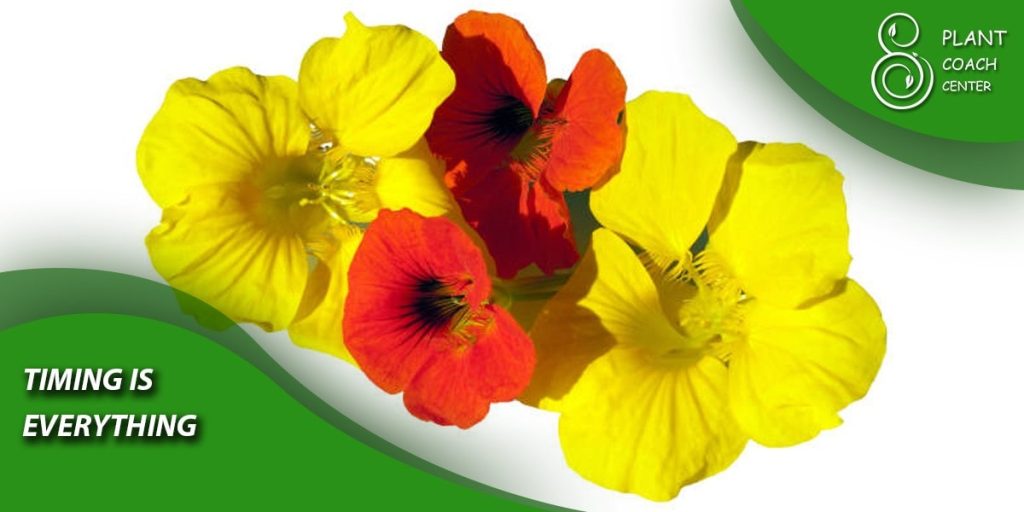
When to Plant Nasturtiums: Timing is Everything
The ideal planting time for nasturtiums depends on several factors:
Frost danger: Nasturtiums are sensitive to frost, so it’s crucial to plant them after the danger of frost has passed. In most regions, this is usually in the spring when temperatures have warmed consistently.
Soil temperature: Nasturtiums prefer warmer soil temperatures for germination and growth. The soil temperature should be around 55-65°F (13-18°C) for optimal germination.
Growing season length: Consider the length of your growing season when deciding when to plant nasturtiums. You want to ensure they have enough time to grow and flower before the arrival of cold weather.
Climate Considerations
Nasturtiums are adaptable plants that can grow in various climates. However, they thrive in temperate to warm climates. In cooler regions, nasturtiums are typically planted in the spring after the last frost date and can continue to bloom until the first frost in fall.
In warmer climates, where frost is less of a concern, nasturtiums can be planted in early spring or even in late winter in milder regions. They can also be planted in the fall for winter bloom in areas with mild winters.
The Role of Sunlight
Nasturtiums prefer full sun to partial shade. They thrive in areas that receive at least 6-8 hours of direct sunlight per day. However, they can tolerate some shade, especially in regions with hot summers, where partial shade during the hottest part of the day can benefit the plants.
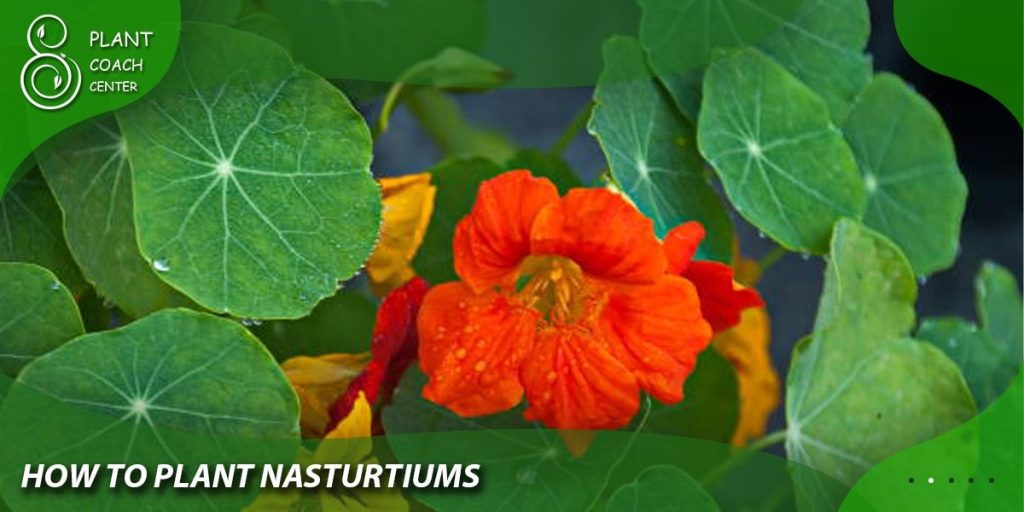
How to Plant Nasturtiums
Choosing the Right Soil
Nasturtiums are not overly fussy about soil conditions but prefer well-draining soil with a slightly acidic to neutral pH (around 6.0-7.0). They can tolerate a wide range of soil types, including sandy or loamy soil. However, heavy clay soil should be amended with organic matter or compost to improve drainage.
Selecting the Perfect Spot
Choose a planting location that meets the sunlight requirements mentioned earlier. Ensure the area has good air circulation to prevent the development of fungal diseases. Nasturtiums can be planted in garden beds, containers, hanging baskets, or along fences and trellises.
Procedure for Planting
Here’s a step-by-step guide on how to plant nasturtiums:
Prepare the soil: Before planting, remove any weeds or debris from the planting area. Loosen the soil and amend it with organic matter or compost if needed.
Sow seeds: Nasturtium seeds can be sown directly into the ground or started indoors and transplanted later. If sowing directly, plant the seeds about 1 inch deep and 8-12 inches apart. If starting indoors, sow the seeds in biodegradable pots a few weeks before the last frost date and transplant the seedlings once they have grown a few sets of true leaves.
Water gently: After planting the seeds, water the soil gently to ensure it is evenly moist. Avoid overwatering, as it can cause the seeds to rot.
Caring for Your Nasturtiums Post-Planting
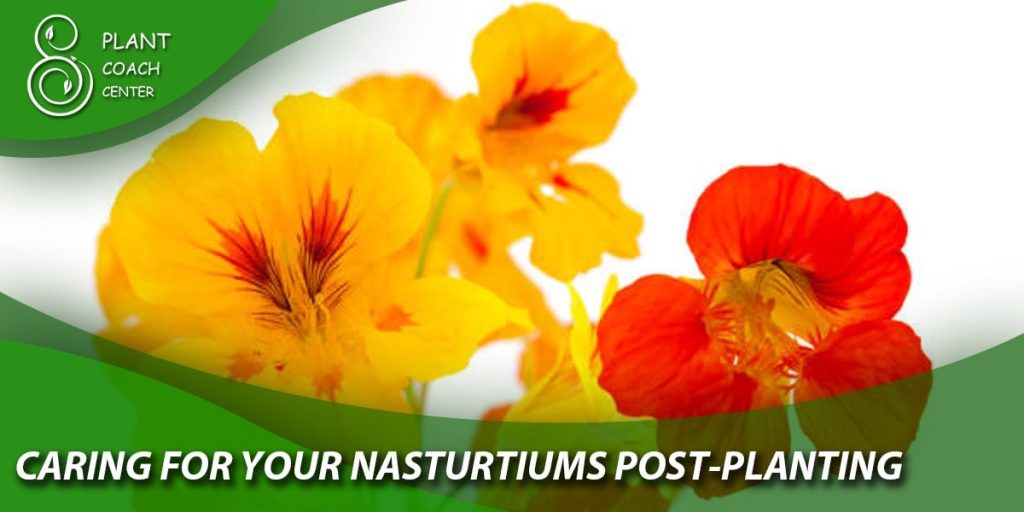
Watering Practices
Nasturtiums prefer moderate watering. Keep the soil evenly moist but not waterlogged. Water the plants deeply when the top inch of soil feels dry. Avoid overhead watering, as wet leaves can promote fungal diseases. Instead, direct the water to the base of the plants.
Fertilizer Use
Nasturtiums are relatively low-maintenance plants that don’t require heavy fertilization. In fact, too much nitrogen can result in excessive foliage growth at the expense of flowers. If your soil is nutrient-poor, you can apply a balanced, slow-release fertilizer at planting time. Alternatively, you can side-dress the plants with compost or a diluted liquid fertilizer during the growing season.
Pruning and Maintenance
Nasturtiums are generally low-maintenance, but some light pruning and deadheading can benefit the plants. Remove any spent flowers or yellowing leaves to promote continuous blooming. Pruning back leggy or sprawling growth can help maintain a compact and tidy appearance. Regularly check for pests or signs of disease and take appropriate measures if necessary.
Troubleshooting Common Nasturtium Problems

Poor Flowering
Lack of sunlight: Nasturtiums require sufficient sunlight to produce abundant flowers. Ensure they receive at least 6-8 hours of direct sunlight per day.
Excessive nitrogen: Too much nitrogen fertilizer can result in lush foliage but fewer flowers. Avoid over-fertilizing and choose a balanced fertilizer or one with a higher phosphorus content to promote flowering.
Age of the plant: Nasturtiums may take some time to establish and start blooming. Be patient and provide them with proper care, and they should start flowering in due course.
Pest Issues
Aphids: These small, soft-bodied insects can infest nasturtiums. Use insecticidal soap or a strong spray of water to dislodge them. Ladybugs and other beneficial insects can also help control aphid populations.
Caterpillars: Some caterpillars, such as cabbage loopers or cabbage worms, may feed on nasturtium leaves. Handpick them or use organic insecticides if necessary.
Disease and Fungal Problems
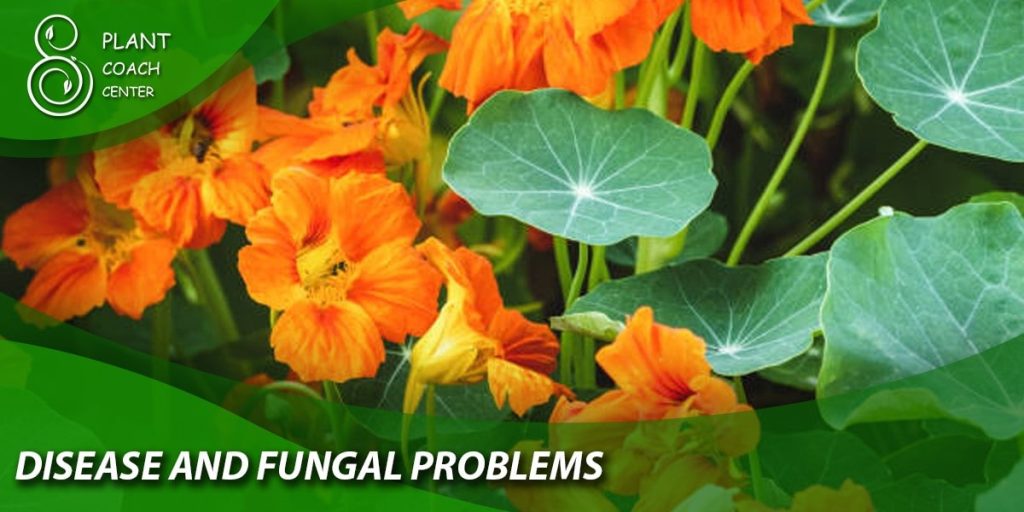
Powdery mildew: This fungal disease can affect nasturtiums, especially in humid conditions. Improve air circulation, avoid overhead watering, and apply fungicidal treatments if necessary.
Root rot: Overwatering or poorly draining soil can cause root rot. Ensure the soil has good drainage, and water the plants moderately to prevent waterlogged conditions.
Conclusion
In conclusion, nasturtiums are versatile and easy-to-grow plants that add vibrant colors to gardens and provide edible flowers and leaves. With proper planting, care, and maintenance, you can enjoy their beauty and benefits throughout the growing season. Whether you’re a beginner or experienced gardener, nasturtiums are an excellent choice to enhance your outdoor spaces.
When is the best time to plant nasturtiums?
The best time to plant nasturtiums is in early spring, after the last frost. They need a lot of sunlight and prefer cooler temperatures.
What kind of soil do nasturtiums prefer?
Nasturtiums thrive in well-drained soil with a moderate nutrient content.
How often should I water my nasturtiums?
Nasturtiums are quite drought-tolerant and do not require frequent watering. Watering them once a week should be sufficient.


